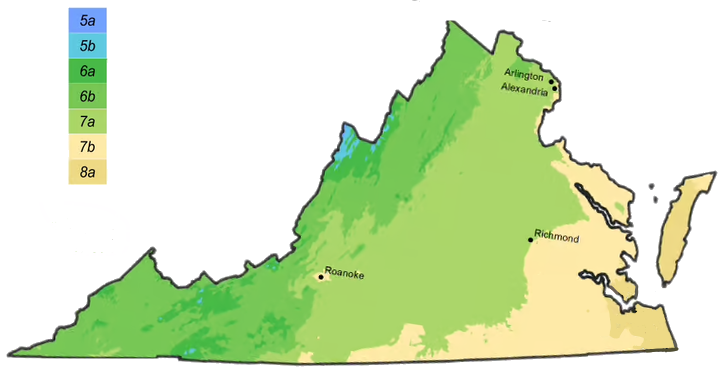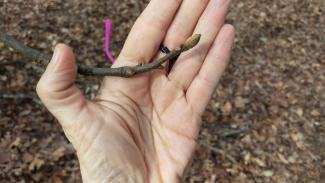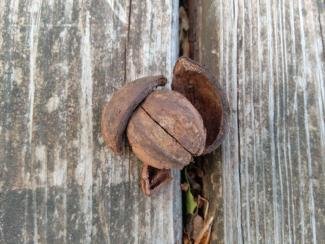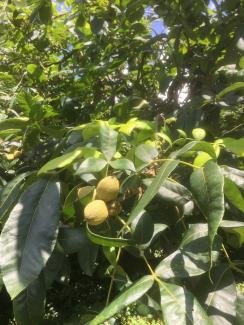
Fairly slow growing and will reach heights of 50 to 80 feet tall or more. The crown is rounded and dense. The tree takes 25 years before producing the edible nut but can continue producing for 200 years. It is a strong, straight trunk tree and the wood is used to make various items and for firewood.
Note: Use this tree in a park, large yard for shade or naturalized areas.
Wildlife value: The Mockernut hickory is a host plant for Banded Hairstreak caterpillars and many moths including the Luna moth. This is a larval host plant for butterflies and moths. It also supports Hickory Horndevil. The nuts are eaten by squirrels, chipmunks and black bears. Fruit is consumed by wood ducks, red-bellied woodpeckers, red fox, squirrels, beaver, eastern cottontail, eastern chipmunk, turkey, white-tailed deer, wild turkey, and white-footed mice. Provide cavities for woodpeckers, black ratsnake, raccoons, and Carolina chickadees
Edibility: Nuts are edible by humans but shells are hard to crack



